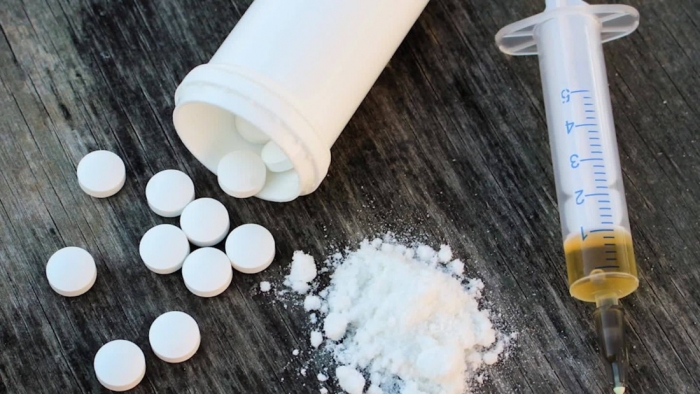The scientific community describes the fentanyl crisis in these general words: Catastrophic and growing. Over the past decade, Canadian researchers have observed the deadly effects of the growing trend of cutting fentanyl into powdered party drugs. With the help of Edith Zorychta, associate professor in the Department of Pharmacology and Therapeutics, The McGill Tribune set out to quantify the dangers of fentanyl.
Fentanyl is 50 times as lethal as other opioid derivatives, including morphine. In an email to the Tribune, Zorychta explained that not all related drugs have the same effect on the human body.
“Their actions on the brain are not the same, and their effects are never limited to the brain alone,” Zorychta said. “Opioids differ from one another in the magnitude and duration of their effects, and they all share the ability to interact with specific opioid receptors.”
Opioids interfere with interactions between neural pathways in the spinal cord and brain, which under medical direction can be used in the treatment of chronic pain. The neural impulses that are affected in the brainstem also control a person’s breathing mechanisms—or in simpler terms, their oxygen intake and carbon dioxide release. If breathing is suppressed, the brain’s supply of oxygen depletes and the consequences can be fatal.
As little as 0.002 grams of fentanyl can be deadly. This quantity, equivalent to the weight of two grains of salt, can be enough to effectively suffocate the ingester.
“Opioids suppress the sensation of pain and the emotional reaction to pain,” Zorychta explained. “Because they are so potent, the difference between a survivable and a lethal dose can be very small.”
The human body rids itself of toxins via metabolization or excretion, but when neither can occur quickly enough to rid the body of the drug, death becomes imminent.
Canadian drug agencies have noted a 2000 per cent increase from 2012 in the prominence of fentanyl in street drugs. Law enforcement warns of other potentially lethal drugs, such as heroin and cocaine, being cut with fentanyl by drug manufacturers to lower production costs.
“It is relatively easy to smuggle quantities [of fentanyl] that can be sold for millions of dollars,” Zorychta explained. “Illegal drug sellers are not concerned about the safety and well-being of their customers.”
Fentanyl and its derivatives are now being added to just about anything to produce a rapid high.
Four thousand Canadians are estimated to have died in 2017 due to an opioid overdose or related complications. This staggering figure from the Public Health Agency of Canada (PHAC) comes from a series of increases in opioid-related deaths across the nation.
“Since the powder is frequently added to other drugs like heroin, methamphetamine, and cocaine, an unsuspecting buyer can die from fentanyl while thinking they are consuming something else,” Zorychta said.
Four people die every day in the provinces of Alberta and British Columbia due to fentanyl overdose. More than half of illicit drug deaths in B.C. last year were related to the consumption of fentanyl products. The most effective treatment currently available is Naloxone, a medication designed to combat opioids in the event of an overdose.
“Naloxone blocks opioid receptors and prevents fentanyl and other opioids from acting,” Zorychta explained. “If it can be administered before breathing stops, death can be averted.”
Unfortunately, in many instances the effects of fentanyl are so rapid that bystanders may not recognize what is happening fast enough to administer the antitoxin.
The fentanyl crisis is a growing threat to the welfare of Canadians that must be addressed by both lawmakers and drug enforcement agencies in the immediate future. For those who plan to partake in any type of drugs, fentanyl testing kits are commercially available and are a simple, individual solution to ensure that the drugs purchased are the same as those advertised.









